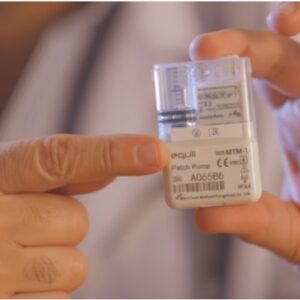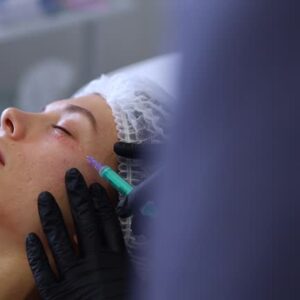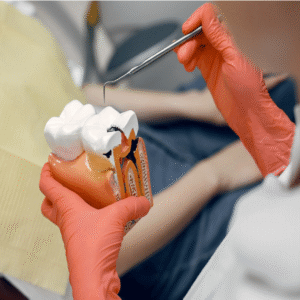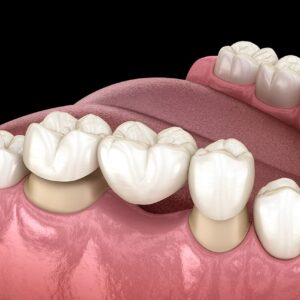Dermal fillers have become increasingly popular in recent years as a non-surgical solution for rejuvenating the face and restoring youthful contours. These injectable treatments are designed to add volume, smooth out wrinkles, and enhance facial features, offering a quick and effective way to achieve a more youthful appearance. The versatility and minimally invasive nature of Dermal Fillers in Abu Dhabi have made them a preferred choice for many individuals seeking aesthetic improvements without the downtime associated with surgical procedures.
The Nature of Dermal Fillers in Cosmetic Treatments
Dermal fillers typically consist of substances like hyaluronic acid, calcium hydroxylapatite, or poly-L-lactic acid, which are biocompatible and safe for use in aesthetic medicine. They are carefully injected into specific areas of the face, such as the cheeks, lips, nasolabial folds, or jawline, to provide volume and contouring. The results are immediate, and the effects can last from several months to over a year, depending on the type of filler used and individual factors.
Common Post-Treatment Expectations
While dermal fillers are generally well-tolerated, it is common for patients to experience some minor side effects immediately after treatment. These can include swelling, redness, or tenderness at the injection site. Most of these effects are temporary and resolve within a few days. However, some patients may notice the formation of small lumps or bumps beneath the skin, which can cause concern or discomfort. Understanding whether such lumps are normal and when to seek medical advice is crucial for maintaining confidence in the procedure.
Are Lumps After Fillers Normal?
The Normalcy of Lumps and Bumps Post-Filler
It is quite common for individuals to feel or notice lumps after receiving dermal fillers. These lumps are often a natural part of the healing process and typically result from the initial placement of the filler or minor swelling. In many cases, these bumps are small, soft, and can be felt under the skin, especially in areas where the filler was injected.
Causes of Lumps
Lumps can form due to various reasons, including uneven distribution of the filler, minor swelling, or the body’s response to the injected substance. Sometimes, the filler may settle irregularly, creating palpable bumps, or there might be localized swelling that feels like a lump. In most instances, these are temporary and tend to diminish as the swelling subsides and the filler integrates into the tissue.
Differentiating Normal Lumps from Abnormalities
While some lumps are normal, it is important to distinguish between expected post-treatment sensations and signs of complications. Normal lumps are usually soft, mobile, and diminish over time. Conversely, persistent or hard lumps, especially if they are painful or growing, may indicate other issues such as lump formation due to overfilling, nodules, or rarely, an adverse reaction.
Managing Lumps After Dermal Fillers
Observation and Patience
Most lumps resolve naturally without intervention. Patients are advised to wait for a few days to weeks, allowing the body to reabsorb swelling and for the filler to settle evenly. During this period, gentle massage under professional guidance can sometimes help distribute the filler more evenly.
Professional Treatments for Persistent Lumps
If lumps persist beyond a reasonable timeframe or cause discomfort, consulting a qualified practitioner is essential. Solutions may include massage, enzyme injections to dissolve hyaluronic acid fillers, or minor corrective procedures to reshape the treated area.
Preventing and Minimizing Lump Formation
Proper Technique and Filler Placement
Ensuring that the procedure is performed by an experienced and skilled practitioner significantly reduces the likelihood of lumps. Precise injection techniques, appropriate filler selection, and correct placement are key factors in achieving natural-looking results and minimizing complications.
Post-Treatment Care
Following post-treatment instructions diligently, such as avoiding excessive touching or pressure on the treated area, can help prevent lump formation. Applying cold compresses as recommended can also reduce swelling and improve comfort.
When to Seek Medical Advice
While most lumps are benign and temporary, it is important to seek professional advice if:
- The lump persists beyond a few weeks.
- The lump is hard, painful, or enlarging.
- You notice any signs of infection, such as redness, warmth, or pus.
- You experience asymmetry or other aesthetic concerns that do not resolve.
Prompt consultation ensures appropriate management and peace of mind.
Conclusion
Feeling lumps after dermal fillers is a common experience and often part of the normal healing process. Most lumps are temporary, soft, and diminish over time as the body adjusts to the filler. However, understanding the causes, management strategies, and signs of abnormality is essential for anyone considering or having undergone dermal filler treatments. With proper technique, post-treatment care, and professional guidance, most individuals can enjoy satisfying results with minimal concerns about lumps or bumps.
FAQs
1. How long do lumps typically last after dermal fillers?
Lumps caused by minor swelling or uneven filler distribution usually resolve within a few days to a few weeks. If they persist longer, consulting a practitioner is recommended for further assessment.
2. Can massage help reduce lumps after filler injections?
Yes, gentle massage, performed by a trained professional, can sometimes help in evenly distributing the filler and reducing the appearance of lumps, especially in the early stages post-treatment.
3. Are lumps after fillers a sign of rejection or allergy?
Lumps are generally not indicative of rejection or allergy but are more often related to the physical placement of the filler or swelling. Persistent or painful lumps should be evaluated by a professional.
4. Is it safe to undergo further treatments if I notice lumps after previous fillers?
Yes, but it is essential to consult your practitioner before proceeding. They can assess the lumps, determine the cause, and recommend appropriate measures or adjustments for future treatments.






